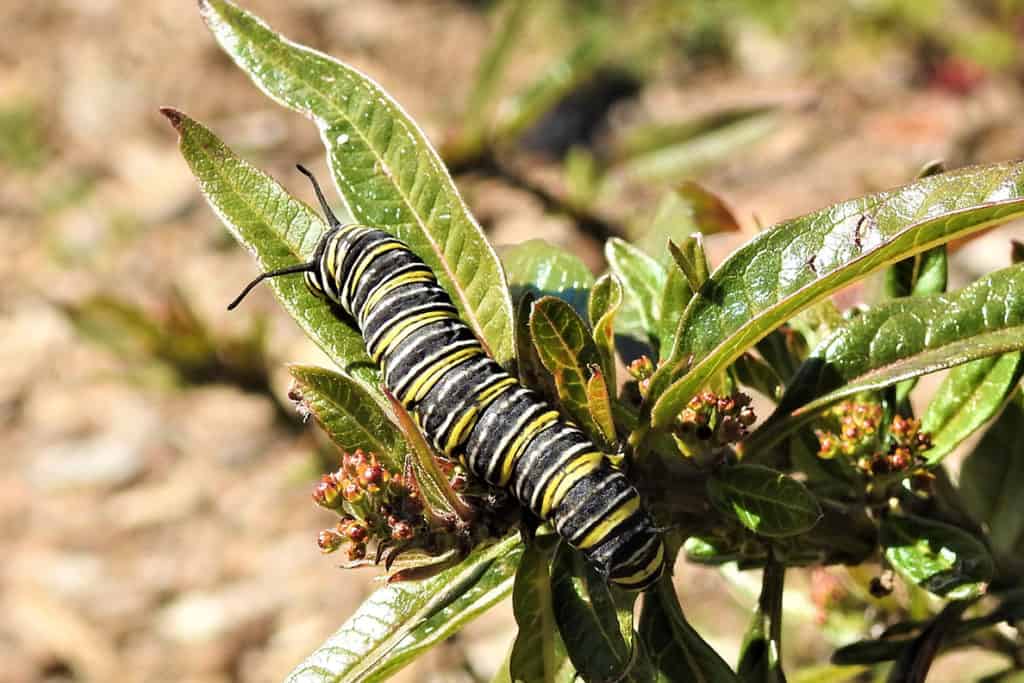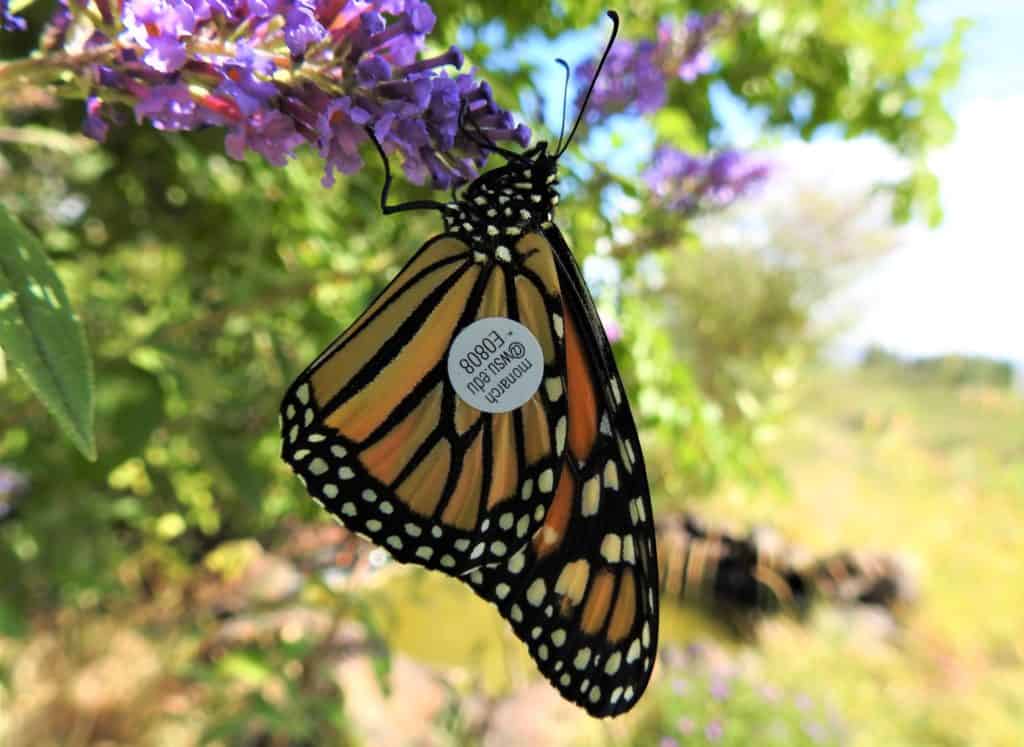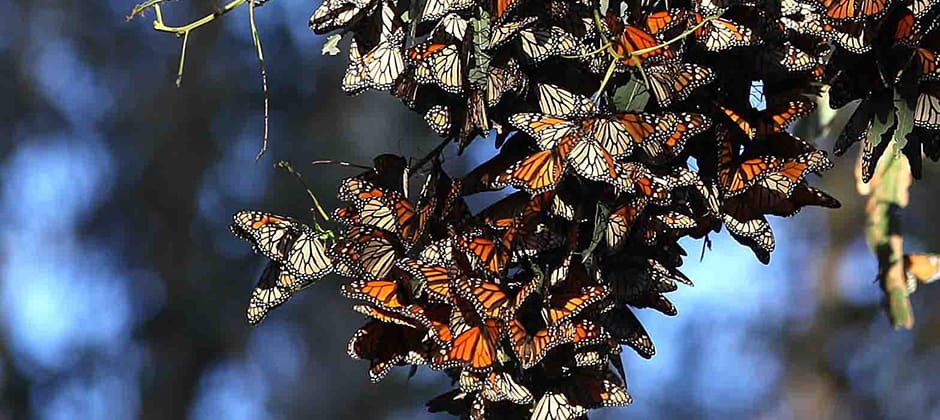Share this article
As the climate changes, are monarchs changing, too?
The western monarch butterfly population has been decreasing on its usual breeding grounds throughout the West. Last winter, overwintering numbers were the lowest ever recorded. But that may not mean the population is in as much danger as we might think.
In a commentary published in Animal Migration, one scientist argues that monarchs (Danaus plexippus), which have decreased from 298,464 overwintering individuals in 2016 to 1,899 in 2020 in coastal California, are actually changing their breeding patterns, reproducing during the winter in urban areas like Los Angeles and San Francisco where they rarely wintered before.
“The whole behavior and ecology of the monarch butterfly in the West appeared to make a drastic shift last winter, which became obvious from social media and citizen science reports of people wondering what was happening,” said David James, an associate professor of entomology at Washington State University and the author of the commentary.
At the same time that citizen scientists were struggling to find butterflies to count at traditional overwintering sites like Pacific Grove and Pismo Beach on the California coast, people in San Francisco and Los Angeles were logging surprise sightings. Not only were they spotting butterflies. They also saw caterpillars on milkweed in their backyards. James decided to use citizen science reports and other information to get a sense of how western monarchs were actually faring. “Because of technology and media, we were able to see what’s happening in real time,” he said. “It was a really different thing happening from traditional overwintering monarch butterflies.”

A monarch caterpillar found in San Francisco last February. Credit: WSU
Looking at iNaturalist data in San Francisco and Los Angeles from the past 10 years, James discovered an uptick in 2020 of five to six times more monarch caterpillar sightings. Facebook pages and other social media showed similar trends. “This is way beyond what we’ve seen before,” he said. Historically, one or two caterpillars might make a winter appearance in San Francisco. “We were getting dozens if not more.”
James then turned to monarch tagging data he had been collecting for about a decade. Most western monarchs tagged in Washington and Oregon are recovered at traditional overwintering sites in California, where monarchs remain in reproductive dormancy. In 2020, however, no tagged monarchs were found at overwintering sites. All recoveries of tagged monarchs were made in northern California and around the San Francisco bay area, usually in association with milkweed, and they were likely breeding.

A tagged monarch butterfly. Credit: David James
The combination of citizen science reports and tagging data suggest that the monarchs may be changing their migratory and breeding behavior, James said.
He suspects this has something to do with a warming climate. James knew from past research that something similar happened in Australia about 40 years ago. In the 1970s, monarchs in Sydney were declining. At the time, James found both breeding and nonbreeding monarchs together, suggesting that some were foregoing winter reproductive dormancy. He suspected that climate warming drove these changes, prompting the butterflies to skip the winter non-breeding phase.
James thinks something similar happened last year when the butterflies encountered an unusually warm California fall. “When they encountered warm conditions and abundant milkweed, they opted to reproduce instead of going to reproductive sleep for the winter at their overwintering sites,” he said.
Although preliminary, the information suggests that monarchs can be flexible in the face of climate change, James said. While other research suggests the monarchs are at risk of extinction, he doesn’t think so. “Maybe the population is not going to be as great as it used to be, but it’s not going to disappear,” he said. “They are adaptable and will survive.”
Header Image: Monarch butterflies overwinter in clumps near Moran Lake in Santa Cruz, California. Monarchs have declined at traditional overwintering locations like Santa Cruz, but they increased in new places like San Francisco and Los Angeles. Credit: David James








